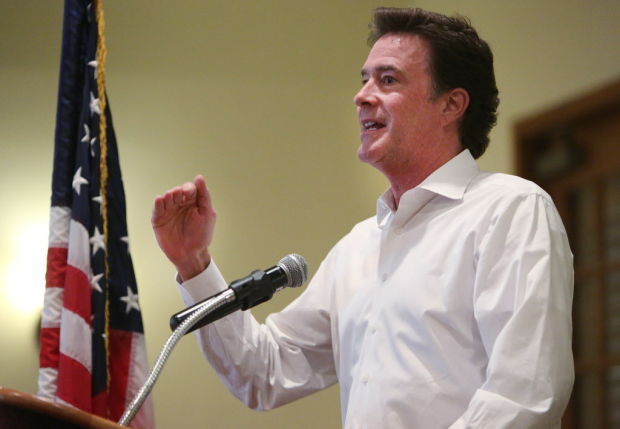Tucson’s slow struggle out of the muck and mire of the recession continued to plague the nonresidential real estate market in 2014, local brokers say.
The city improved slightly on most fronts, particularly in the retail sector where the current vacancy rate is 7.8 percent, down from 8 percent in 2013, but growth is expected to remain sluggish in 2015.
Hank Amos, CEO and chairman of Tucson Realty & Trust Co., said during the company’s forecast meeting Thursday that a distinct pattern has emerged over the last five years.
“The year starts off strong,” he said. “Companies and individuals have plans to grow. Momentum builds and then we get to the end of April or May and the economy doesn’t come through.”
Retail remained the strongest market in the commercial realm, adding 410,000 square feet of positive net absorption, which relates to more space being leased than vacated, in 2014.
Retail specialist Pat Darcy attributed the growth to the redevelopment of central area properties such as Wilmot Plaza, at North Wilmot Road and East Broadway, and the development of long vacant parcels like the Chapman Automotive Group expansion at East 22nd Street and South Columbus Boulevard.
He singled out downtown as one of Tucson’s strengths, with more than 60 restaurants, 53 retail stores, two minigrocers and 18 nightclubs already in place, and new ventures, including the Johnny Gibson Downtown Market and the Proper Meatery, moving in.
Several national chains such as Natural Grocers, Cheddar’s Casual Café and LongHorn Steakhouse entered the Tucson market in 2014 and early 2015. Darcy said to expect to see more of the same throughout the new year.
New additions will include Kneaders Bakery & Café, Raising Cane’s Chicken Fingers, several Haggen Food & Pharmacy grocery stores and Blake’s Lotaburger, a fast-food chain out of Albuquerque.
Another major development will be the Tucson Premium Outlets, Darcy said; the 360,000-square-foot outlet mall is expected to be open at West Twin Peaks Road and Interstate 10 by October.
The office market saw a small increase in activity, thanks primarily to the growing number of medical and medical-related companies, said specialist Doug Richardson.
Three of the six largest office building sales in 2014 involved medical companies.
Richardson cited the Affordable Care Act and an aging population as the primary reasons behind the increase.
“We continue to see urgent care and surgery centers pop up all over town,” he said.
The city-wide vacancy rate for office space stood at 18 percent in 2014, but Richardson said that was primarily due to several new and newly renovated buildings and several large office buildings, including the 60,000-square-foot Muscular Dystrophy Association building at 3300 E. Sunrise Drive and the 67,700-square-foot building at 1 East Broadway, entering the market.
The large amount of empty office space has led to a drop in lease rates.
“Office lease rates are what they were in the mid-to-late 1980s,” Amos said. “That is great for the consumer, but difficult for the landlord or owner who might have purchased the building in the 2000s.”
On the industrial front, construction is not expected to pick up in 2015, which will keep the demand for warehouse and contractors’ yards weak, according to industrial specialist Chuck Blacher.
The industrial vacancy rate was at 10.6 percent at the end of the fourth quarter.
Only four industrial buildings larger than 15,000 square feet sold in 2014, down from eight buildings in 2013.
There currently are 87 industrial buildings at 5,000 square feet or larger and 121 buildings at 1,000 square feet or larger on the market.
The largest lease signings in 2014 were for 135,768 square feet of space by Intuit at 2800 E. Commerce Center Place, 83,140 square feet by Amcor Pet Packaging at 6161 S. Palo Verde Road and 60,405 square feet by Revenue Cycle Service Center at 6223 S. Palo Verde Road.
Blacher said that as the job market slowly improves, there is no reason to think Tucson’s industrial market won’t improve with it.
“Employees take up space,” he said. “Demand for industrial space should pick up. We are looking forward to that at the end of 2015, into 2016.”
Amos said until the city picks up some big companies to create jobs, the recovery process will continue to be slow-going.
“We are going to have a better year than last year,” he said. “Not by huge amounts, but there will still be a notable difference by the end of 2015.”





